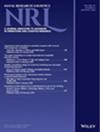供应链结构、债务融资和产品市场竞争
IF 2.1
4区 管理学
Q3 OPERATIONS RESEARCH & MANAGEMENT SCIENCE
引用次数: 0
摘要
本文研究了两种供应链结构下资本结构与产品市场竞争的相互作用:一种是分销结构,即两个相互竞争的零售商从一个共同的供应商处进货;另一种是平行结构,即每个零售商从一个专门的供应商处进货。分析表明,如果零售商能够获得外部信贷,那么与销售替代品(互补品)的分销结构相比,平行结构下的零售商会借贷更多(更少),购买更多(更少),违约概率更高(更低)。零售商的杠杆作用提高了上游供应商和渠道的利润,但只有在销售互补品的情况下才会提高自身的利润。如果零售商销售的是替代品,那么借贷就会使他们的情况变得更糟,从而导致囚徒困境现象。如果只有一家零售商能够获得外部信贷,那么如果零售商销售替代品(互补品),它就会享受领导溢价(损失),这种效应会在平行结构下涓滴扩散到杠杆零售商的上游供应商。因此,专用供应商会教唆杠杆零售商比非杠杆零售商更积极地参与竞争。然而,共同供应商与其下游客户的资本结构无关。这些结果表明,外部信贷对供应链盈利能力的影响取决于供应链成员所处的阶段、产品差异化程度、供应链结构、需求的不确定性以及竞争对手是否也能获得外部信贷。本文章由计算机程序翻译,如有差异,请以英文原文为准。
Supply chain structure, debt financing and product market competition
This paper studies the interactions of capital structure and product market competition under two supply chain structures: a distribution structure where two competing retailers source from a common supplier and a parallel structure where each retailer sources from a dedicated supplier. The analyses demonstrate that if the retailers have access to external credits, they will borrow more (less), buy more (less), and incur a higher (lower) default probability under a parallel structure than under a distribution structure if the retailers sell substitutes (complements). The retailers' leverage improves the profit of their upstream suppliers and of the channel but improves their own profits only if they sell complements. If they sell substitutes, borrowing makes them worse off, leading to the prisoner's dilemma phenomenon. If only one retailer has access to external credit, then it will enjoy a leadership premium (loss) if the retailers sell substitutes (complements), and this effect trickles up to the upstream supplier of the leveraged retailer under the parallel structure. Thus, the dedicated suppliers will abet the leveraged retailers to compete more aggressively than unleveraged ones. However, the common supplier is independent of their downstream customer's capital structure. These results reveal that the impacts of external credit on the supply chain profitability depend on the stages the supply chain members are in, the degree of product differentiation, the supply chain structure, the uncertainty of demand, and whether the competitor also has access to external credits.
求助全文
通过发布文献求助,成功后即可免费获取论文全文。
去求助
来源期刊

Naval Research Logistics
管理科学-运筹学与管理科学
CiteScore
4.20
自引率
4.30%
发文量
47
审稿时长
8 months
期刊介绍:
Submissions that are most appropriate for NRL are papers addressing modeling and analysis of problems motivated by real-world applications; major methodological advances in operations research and applied statistics; and expository or survey pieces of lasting value. Areas represented include (but are not limited to) probability, statistics, simulation, optimization, game theory, quality, scheduling, reliability, maintenance, supply chain, decision analysis, and combat models. Special issues devoted to a single topic are published occasionally, and proposals for special issues are welcomed by the Editorial Board.
 求助内容:
求助内容: 应助结果提醒方式:
应助结果提醒方式:


